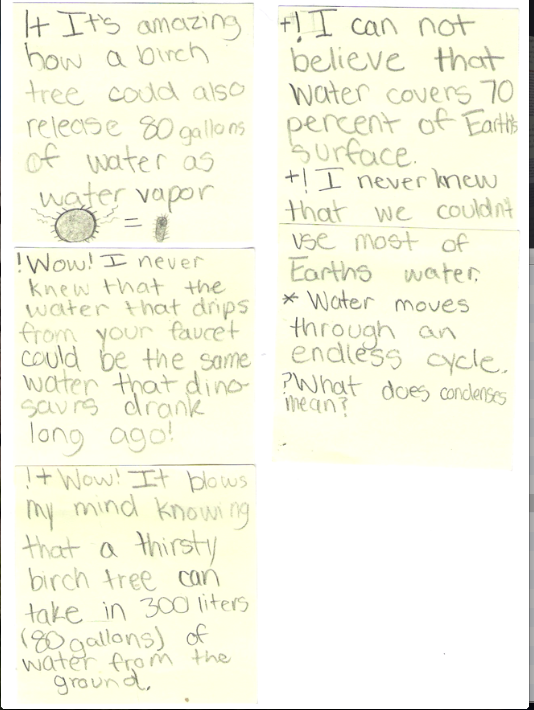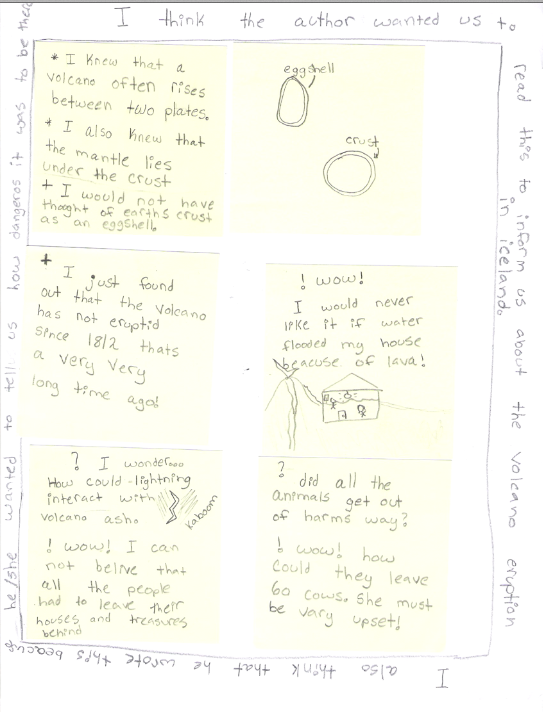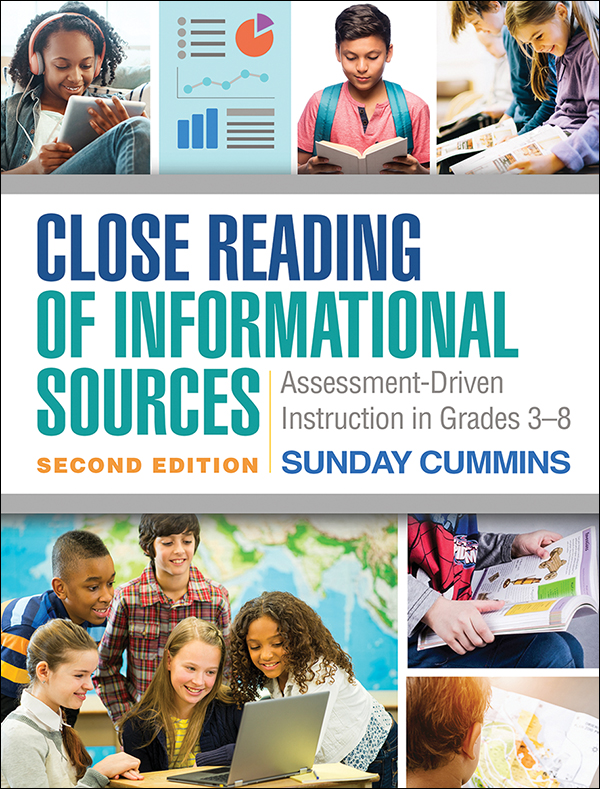
Have you ever conferred with a student who had difficulty recalling what they’d read? Or who seemed to recall the “easy to understand” parts of a text but not the harder parts? These students may need instruction on monitoring for meaning. I use the Coding Strategy (Hoyt, 2008) to reinforce self-monitoring. After each sentence or paragraph or section of text, students stop, think, and mark the text with one of the following codes:
*I already knew this information.
+ This is new information.
? I don’t understand this part. I need to make sense of it!
Then they write a note about their thinking. If you’re familiar with the three phase plan for learning, I’d suggest you introduce this strategy during Phase 2.
Phase 1 Introduce the source & notice where the struggle is
During Phase 1, or a first lesson, introduce a source and provide time for the students to enjoy reading and discussing. Lean in for reading conferences and notice whether the students really do have issues with monitoring and what those issues might be. This may include noticing parts that seem hard for the students to comprehend. For example, I was working with a group of 5th grade students reading about a volcano eruption and its impact on surrounding communities. The students easily understood the who, where, and when details, but struggled to make sense of and paraphrase the author’s explanation of how an eruption occurs. During Phase 2 we closely read and practiced using the “coding strategy” on that part of the source.
Phase 2 Teach the Coding Strategy with a harder part of the text
- Explain the WHAT, WHY, HOW of the strategy. When I introduce a strategy, I explain what the strategy is and why it’s important to our reading (see image below).

- Present an anchor chart with how readers use this strategy. Here’s a link to the sample anchor chart below.

- Then THINK ALOUD. I read aloud short chunks of the text (sometimes just a sentence), think aloud about how I’m making sense of that chunk – referring to the list of codes and the anchor chart, and write aloud annotations. Below is an image of the notes I wrote in front of the fifth grade students.

- Next provide GUIDED & INDEPENDENT PRACTICE. Direct students to read a chunk of text and stop to write a code with a few notes. Lean in to coach individuals. Refer to the list of codes and the anchor chart as a support. Then ask students to share with a partner. Proceed in a similar fashion with additional chunks of the text. Just a note – most students do not code for what they don’t understand – and may need prompting to do that.

- SYNTHESIZE – SUM UP LEARNING & STRATEGIC PROCESSING – Students can end up with very fragmented thinking if they just focus on coding and don’t also think about how all of the details they are reading are related. During conferences and at the end of the lesson, pose questions that require synthesis like:
- So looking at all of your coded notes, what do you think the author’s purpose was for writing this text? What makes you think so? And why is this important?
- So what did you learn from reading the whole text that was important? Or that added to your knowledge about the world or changed your understanding of the world?
Phase 3 Write in Response
Close by asking students to place their notes in the middle of a sheet of paper and to draw a frame around the notes (see image below). In the frame, they write their thoughts about the main idea. Check out this link for more information on teaching main idea with a frame analogy.

THEN DO THIS AGAIN and again with other sources (preferably on a similar topic), releasing more and more responsibility over time. This means some phase 2 lessons may start with “you do” (with you nearby to coach) instead of an “I do.” Below is a one page guide that includes the what, why, how and how to release responsibility over the course of several texts & lessons.
Here’s a link to the one-pager below. It’s a quick reference guide for the what, why, and how and includes suggestions for lessons that gradually release responsibility to the students.

For additional sample lessons and a rubric for assessing students’ coding, check out Chapter 7 “Monitoring for Meaning” in Close Reading of Informational Sources.

Hope this helps.
Sunday
UPDATED 1/11/24
